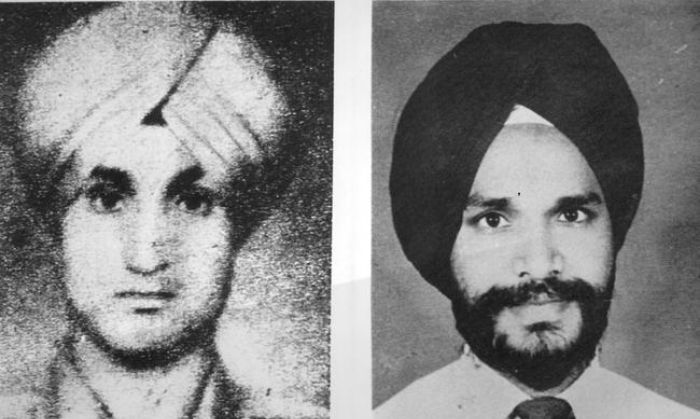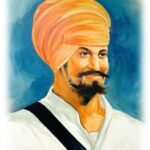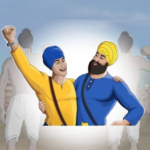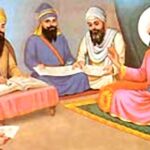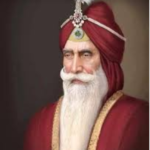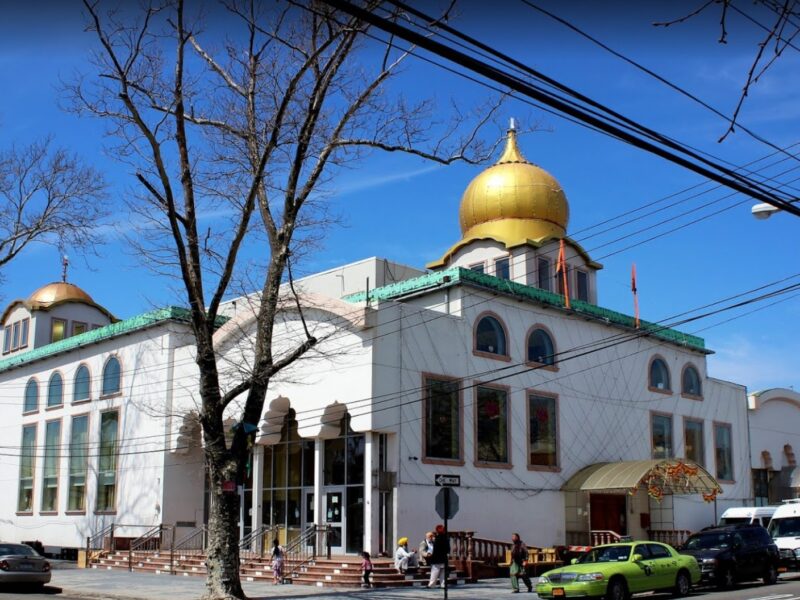Shaheedi Diwas
The SGPC, as the main Sikh religious body represents the Sikh community, includes significant historical events and martyrdom anniversaries in its calendar. Bhai Kehar Singh and Bhai Satwant Singh Shaheedi Diwas is mentioned in the SGPC calendar as a way of honoring and remembering their sacrifice for the Sikh cause.
Bhai Kehar Singh and Bhai Satwant Singh Shaheedi Diwas marks the remembrance of the martyrdom of Bhai Kehar Singh and Bhai Satwant Singh, who were executed on January 6, 1989. The events leading to their execution are rooted in the aftermath of the assassination of Prime Minister Indira Gandhi on October 31, 1984.
Many Sikhs believe that Satwant Singh and Beant Singh were defending their faith and community from the Indian government’s actions and consider Satwant Singh and Beant Singh as heroes.
Background
The assassination of Prime Minister Indira Gandhi was a tragic event that unfolded in the context of rising tensions between the Indian government and the Sikh community. In June 1984, the Indian military launched Operation Blue Star to remove armed Sikh militants who had fortified themselves inside the Golden Temple complex in Amritsar. The operation led to significant civilian casualties and damage to the holy Sikh shrine.
Certainly. The Indian Army’s attack on the Golden Temple, also known as Operation Blue Star, took place in June 1984. The Golden Temple, located in Amritsar, Punjab, is the most sacred site in Sikhism and serves as the central Gurdwara (place of worship) for Sikhs worldwide.
The operation aimed to flush out the militants from the complex and restore law and order. However, the military action resulted in significant damage to the temple complex and the loss of many lives, including civilians, militants, and members of the Indian security forces.
The operation faced severe criticism from various quarters, including the Sikh community, who viewed it as an attack on their religious sanctity. The aftermath of Operation Blue Star led to widespread protests, Sikh grievances, and a surge in Sikh militancy in Punjab.
Tragically, in the aftermath of the operation, Prime Minister Indira Gandhi was assassinated by her Sikh bodyguards, Satwant Singh and Beant Singh, which further exacerbated tensions and led to anti-Sikh riots in various parts of India.
The attack on the Golden Temple and its consequences remain a significant and contentious chapter in Indian history, particularly concerning the relationship between the Indian state and the Sikh community.
Arrest and Trial
In the aftermath of the assassination, Bhai Kehar Singh, who was not present at the scene but was accused of being involved in the conspiracy, was arrested. He was charged with conspiracy to commit murder, and despite protests and assertions of innocence, he was sentenced to death.
Bhai Satwant Singh and Beant Singh, the actual assassins, were also arrested. Both were sentenced to death for their direct involvement in the assassination.
Having actually decided on action several months earlier, he spent his time developing a relationship with the Guru, building his rehit (Sikh discipline), through daily darshan (connection) of the Sri Guru Granth Sahib Ji, until That they were not ready to take the nectar. He even took the risk of traveling to Punjab, visiting Sri Darbar Sahib and offering Ardaas in front of the Akal Takht for aghaya (permission) and strength at the feet of Guru Hargobind Sahib Ji for his mission.
The mainstream story states that Bhai Kehar Singh was not involved in the planning of the assassination and was executed merely because of his relation to Bhai Beant Singh. However, Shaheed Bhai Kehar Singh was the man who not only inspired Bhai Beant Singh and Bhai Satwant Singh to take this revolutionary action, Rather, it was under his guidance and tutelage that these police officers and soldiers were groomed and transformed into the two lions of Guru Gobind. We praise Singh today. Bhai Kehar Singh probably knew most deeply what this journey would involve, and this sentiment is visible during his imprisonment and his refusal to obey the Indian authorities or bend to their will.In his last meeting with his wife, Bhai Kehar Singh told Bibi Jasbir Kaur that he was ready for death: “He said it is God’s will and he is ready for death, as the Sikhs have sacrificed in the past .It is a continuation of our past.
Execution
On January 6, 1989, Bhai Kehar Singh and Bhai Satwant Singh were executed by hanging in Delhi’s Tihar Jail. Their execution remains a point of contention, with many in the Sikh community believing that they were unfairly implicated and that the legal proceedings were biased.
Observance
Bhai Kehar Singh Bhai Satwant Singh Shaheedi Diwas is observed on January 6 each year. Sikhs remember their sacrifice, considering them as martyrs who stood up against perceived injustices. The day serves as a time for reflection on the tragic events of 1984 and its aftermath, as well as a call for justice and human rights. Commemorative events may include prayers, kirtan, and discussions about the historical context and the impact of those challenging times on the Sikh community.
Last meeting with family
Bhai Satwant Singh’s mother says of her last meeting with her family: “He touched my feet and said, “I am ready for martyrdom, I will die with my head held high, I will never let my community down.” 39; Mother Pyar Kaur said after meeting her son for 15 minutes.
A great injustice is done to the memory of these Qaumi martyrs, where their qurbani (sacrifice) is not seen in the right context, and they are portrayed as being aloof from the insurgency in Punjab and unconnected with the Khalistan struggle. They are not only martyrs of the Khalistan struggle, but their actions paved the way for the current armed conflict. While the Battle of Amritsar in June 1984 laid the foundation of Khalistan, on 31 October 1984, Shaheed Bhai Beant Singh and Shaheed Bhai Satwant Singh launched the first strike on behalf of the Sikh community.
It should be remembered that it was not until April 1986 that the declaration of Khalistan by Sarbat Khalsa in January 1986 was approved and officially declared by the Khalsa Panth. Sarbat Khalsa recognized the sacrifice of Shaheed Bhai Beant Singh (who was martyred on 31 October 1984 while Bhai Satwant Singh and Bhai Kehar Singh were martyred on 6 January 1989) and honored him as a communal martyr. While India had been waging an undeclared war on Punjab and the Sikhs since the partition of Punjab, resulting in countless martyrdoms, the three martyrs are fondly remembered because in their first action they decapitated the enemy. The irony of getting our queen out on our first move is that people who call themselves “Indians” are proud to have invented Chaturanga (chess).

Some details in his life reflect the deeper meaning and depth of his actions.
The actions taken by these martyrs were not personal, they were acting as Khalsa on behalf of the entire Sikh community, and were very conscious of their actions, and what effect it would have on the community. For example, he acted according to the rules of the Khalsa, did not attack anyone except the enemy, and refused to flee even when security forces fled the scene out of fear. They wanted to make a political statement, their actions wanted to be considered, and they wanted to take full responsibility, to give a full account, lest the murder become entangled in conspiracy theory and myth.
Being posted at the Prime Minister’s residence, he had ample opportunities to accomplish his mission any day of the week. However, their mission was not just to assassinate the Prime Minister, it was a major step forward for the Chardi Kala of the Sikh community, and so they wanted to receive the blessings of the Guru. Taking the extra time to prepare themselves as Gursikhs meant that they would remain steadfast both before and after they faced torture and inevitable hardships on their families. They will not falter and will maintain the dignity of the Sikh community till their last breath.
I have a good option.
Who can know how they will die, what their death will be like.
I have a new card.
If I do not forget the Almighty Creator in my mind, my death will be easy.
I have a good option.
The world is afraid of death; Everyone wants to live.
And there are many other good options.
By the grace of the Guru, one who dies while alive understands.
This is a good choice for my husband.
O Nanak, he who dies such a death lives forever. ||2||
Bhai Satwant Singh was shot multiple times, tortured and kept in solitary confinement for more than 4 years. Contrary to the dignity of the martyr, the Indian State deliberately inflicted pain on Bhai Satwant Singh by shooting him in the spine. In Chardi art, Brother Satwant Singh used his difficulty sleeping due to the pill to immerse himself deeply in Gurbani. Although he ate several kilos of almonds a week (his only request to his family), his jailers were surprised to see someone on death row doing hundreds of press ups and squats while reciting Gurbani. Was doing.
He mentioned that the bullet was the only thing that pained his father during the prison visit, and Bapu Trilok Singh casually replied, “Oh son, it is out of my hands, only your Dasham Peeth can help you Is”. To the surprise of the family, Bhai Satwant Singh took it literally and on offering prayers to Guru Gobind Singh, miraculously the bullet passed through his spine, and he himself was able to cut it from his back.
Justice R.S. Sodhi, who was a lawyer at the time, represented Bhai Satwant Singh and never forgot their last meeting on the day of his execution. A dejected Sodhi asked Bhai Satwant Singh how he was feeling, Martyr Bhai Satwant Singh who by now was completely immersed in Gurbani uttered this Shabad as his last words:
I have a good option
Kabir says, nothing within me is mine. Whatever is there is yours, O Creator.
I have a good option
If I hand over to you what is already yours, what will it cost me? ||203||
Seeing that the Indian State and its entire machinery were unable to break this beloved couple of Gurus, it gave great strength to their families to see such Gursikhs walking towards their martyrdom in Chardi Kala. Under the leadership of Bapu Trilok Singh, the family welcomed the martyrdom of their dear one by standing outside Tihar Jail and chanting ‘Jakara’.
